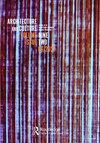收藏国内容:约1700 - 1850年法国的领土与价值
IF 1.8
0 ARCHITECTURE
引用次数: 1
摘要
1700年前后,法国政府几乎没有工具来理解其领域。持续不断的战争开支促使政权发展新的代表性手段,以跨越地理距离传达有关国家内容和范围的知识,以评估可用的资源和生产力。本文认为,国家的形成是基于对土地及其所包含的主体的枚举技术。有两份文件通过收集资料展示了这种整合:ssamubastien Le Prestre de Vauban的税收提案,其中包括全面的人口普查;还有一系列城镇的物理模型,或称浮雕图,这些模型结合了建筑商、工程师、地理学家、地质学家、测量员和手工艺者的技能,创造了领土占有的物质可视化。两者都依赖于递归过程:扩散收集信息,整理,然后返回现场。结合起来,这两件文物展示了一个仍处于起步阶段的国家根据早期的政治经济学理论为政府开发空间工具的方式。本文章由计算机程序翻译,如有差异,请以英文原文为准。
Collecting State Contents: Territory and Value in France c.1700–1850
Abstract Around 1700, the French administration had few tools for understanding its domain. Expenses from constant war incited the regime to develop new representational means of conveying knowledge about state contents and extents across geographic distances, in order to assess available resources and productivity. This article argues that administrators formulated the state based on technologies for enumerating the land and subjects it comprised. Two documents exhibit this consolidation by collecting information: Sébastien Le Prestre de Vauban’s taxation proposal, which included a comprehensive census; and a series of physical models of towns, or plan-reliefs, which amalgamated skills of builders, engineers, geographers, geologists, surveyors, and craftspeople to create material visualizations of territorial possession. Both relied on recursive processes: diffusion to gather information, collation, then returning to the field. In combination, these two artifacts demonstrate the ways in which a still-inchoate state developed spatial instruments for government according to incipient theories of political economy.
求助全文
通过发布文献求助,成功后即可免费获取论文全文。
去求助
来源期刊

Architecture and Culture
ARCHITECTURE-
CiteScore
0.80
自引率
0.00%
发文量
25
期刊介绍:
Architecture and Culture, the international award winning, peer-reviewed journal of the Architectural Humanities Research Association, investigates the relationship between architecture and the culture that shapes and is shaped by it. Whether culture is understood extensively, as shared experience of everyday life, or in terms of the rules and habits of different disciplinary practices, Architecture and Culture asks how architecture participates in and engages with it – and how both culture and architecture might be reciprocally transformed. Architecture and Culture publishes exploratory research that is purposively imaginative, rigorously speculative, visually and verbally stimulating. From architects, artists and urban designers, film-makers, animators and poets, from historians of culture and architecture, from geographers, anthropologists and other social scientists, from thinkers and writers of all kinds, established and new, it solicits essays, critical reviews, interviews, fictional narratives in both images and words, art and building projects, and design hypotheses. Architecture and Culture aims to promote a conversation between all those who are curious about what architecture might be and what it can do.
 求助内容:
求助内容: 应助结果提醒方式:
应助结果提醒方式:


